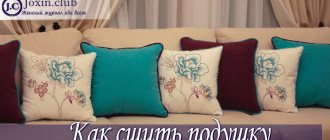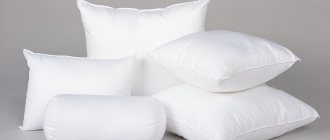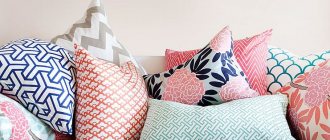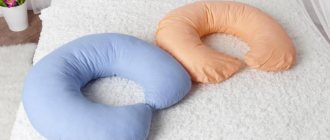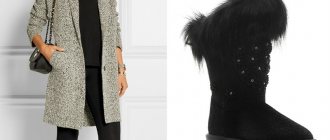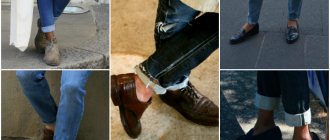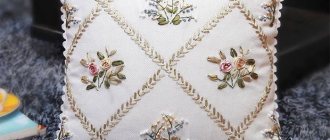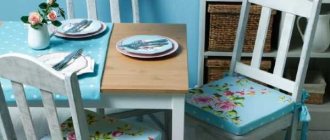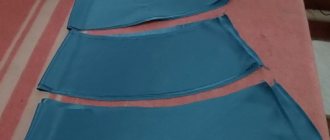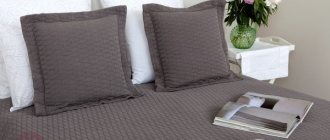Comfort is an elusive note at home, which is created by carefully selected little things. And what could be ideal for design if not a self-sewn pillow, taking into account the size, style and individual taste of the hostess? The issue of sewing is easy to solve, but deciding what to stuff the pillow with with your own hands is very difficult.
What to stuff the pillow with?
Many needlewomen stuff pillows with cotton wool, but when they are used, they very quickly lose their presentation, because cotton wool is a very fragile material and quickly rolls into hard balls. Thus, the product very quickly loses its shape.
Important! If you still decide to stuff the pillow with cotton wool, then use it only as a decorative element.
Making your own pillow filling is very simple:
- You can use pieces of soft fabric or fur. If you fill the product with such materials, it will be perfect as a designer floor decoration.
- Also, at home, you can fill the pillow with padding polyester, foam rubber or holofiber. These materials are easy to find at any hardware store.
- If you have a lot of small children in your home, then small silicone balls are used as filler for decorative pillows.
Important! A child playing with such a pillow develops fine motor skills, hands, and, accordingly, speech. Thus, you can “kill two birds with one stone” - entertain the child and transform the room.
Filler properties
Depending on what the accessory will be used for, the requirements for the material for stuffing pillows are drawn up.
You can stuff a decorative sofa pillow with padding polyester, pieces of knitted fabric, cotton wool, and other materials that are not that expensive. In a situation where you need to stuff a decorative model, you should pay close attention to the fabric from which the cover is sewn.
A pillow from a sofa or chair is used throughout the day. The material gets dirty quickly. This means that the necessary properties for a pillowcase are easy washing and quick drying.
Those who decide to make their own pillow for sleeping should pay attention to the filler with which it can be filled, which has the following properties:
- Elasticity. The product retains its original shape well, does not change it when a sleeping person moves, and immediately restores volume.
- Air conductivity. The padding, the fabric from which the cover is made, conducts air flow and does not interfere with a person’s ability to breathe fully.
- Hypoallergenic. The material used to stuff the pillow is made from hypoallergenic raw materials.
- Just care. The pillow is easy to wash. Convenient if machine washable.
Various artificial paddings are sold in stores. Needlewomen often refuse them, wanting to fill their handmade item with natural material, such as feather or down.
Those who always prefer something special use plant materials. Good options are buckwheat husks and dried aromatic herbs.
How to choose the right fabric?
The choice of fabric for such decorative items should be based on two main criteria - strength and beauty:
- The strength of the material plays a huge role in the life of the pillow. The stronger the fabric, the longer it will remain beautiful and undamaged.
- The choice of material from which product covers will be sewn also depends on the color scheme of the room’s interior. The fabric does not have to be the same color as the sofa or wallpaper. It should match their shade.
Important! If you choose the right color of the material, you can create a very contrasting room design.
In order to sew a pillowcase for a pillow, you can choose absolutely any material you like. Let's look at the main types of fabric that are suitable for this purpose:
- Cotton or linen.
- Silk.
- Fleece.
- Canvas.
Important! Needlewomen use old clothes to decorate pillows (denim or woolen clothes). It looks very original and unusual.
Sewing cushion covers for the sofa
Sofa cushions have long been a favorite decor item, because it is so cool and convenient to have a large number of them. They are used every day, which negatively affects their appearance, so every housewife thinks about its safety.
A pillowcase is one of the easiest ways to protect yourself.
Pillowcase for square pillow 70×70
You don't need a lot of investment to create a pillowcase.
Necessary:
- material, preferably easily washable;
- large ruler, meter;
- soap or marker for a pattern;
- sewing machine;
- lock.
Let's move on to sewing.
Algorithm for making a simple square pillowcase:
- We make a rectangular pattern with a length of 144 cm and a width of 74 cm.
- Iron the fabric and fold it in half so that the right side is on the inside.
- Carefully sew the lock to the fabric, do not forget to retreat 2 centimeters, which are left for the allowance. We check it for functionality.
- We sew up the sides of the pillowcase, being careful that the fabric does not stretch or bend anywhere.
- Turn the cover right side out and put it on.
The pillowcase can be either a classic plain one or made using any technique, for example, patchwork.
The video provides an overview of sewing a pillowcase.
Pillowcase with “ears” for a rectangular pillow 50×70
A cover for a sofa bed does not have to be complex in design, since ordinary “ears” can make your product laconic and suitable for the decoration of the apartment.
Materials required for sewing:
- textile;
- meter;
- scissors;
- sewing machine.
To sew a cover for a 50×70 pillow, follow these steps:
- We cut out a rectangle measuring 190 by 63 centimeters.
- Fold the fabric on the short side, first 1 cm, and then another centimeter, and make a seam. This edge treatment will look neat on the outside of the pillowcase. We carry out the procedure on both short sides of the canvas.
- We measure 75 cm from one processed edge and fold the fabric, the front side should be inside.
- Then we count out another 5 centimeters, and fold the other side taking this distance into account.
- We make running seams or pin them.
- Place seams on the sides of the pillowcase.
- We turn out and iron the resulting workpiece.
- We measure 5 centimeters on each side to make “ears” for the cover.
- Mark the seam line with soap.
- We sew exactly along the intended line very carefully, since this is the front side.
The sewing algorithm is presented more clearly in the video.
Shape and fillers in different rooms
Today you can find a lot of options when deciding what shape to sew a pillow? Basically, the shape of the product depends on the interior and furniture. Let's look at some interesting ideas for such decorative elements:
- Sofa cushions. Now it has become very fashionable to buy sofas without backs. Instead, there are sofa cushions, which are much more comfortable than a traditional sofa backrest. Over time, they get boring, but it’s easy to update them if you sew a few bright pillowcases. Such products can be rectangular or oval. Look great on the sofa in the living room.
- Rollers. These products are very convenient as a footrest after a hard day at work. They can be made in the form of a candy, a pencil, or in a classic style. These pads are often found in cars.
- Toy. When creating such a pillow, you can give free rein to your imagination and sew anyone you want - a cat, a dog, a pig, etc. They perfectly complement the design of a children's room, and they are also very comfortable to sleep on if you choose a high-quality filling.
- Letters. One of the most original options, since it can be used not only for yourself, but also as a gift for a birthday or any other holiday. Such products are often used only as decoration.
Important! No matter what shape you choose, adding some originality will create a unique decorative piece for your home.
Requirements for filling for hand-made pillows
Let's figure out what basic characteristics the filler should have.
The main features of a good padding material:
- Hypoallergenic, that is, the material will not cause an allergic reaction in users.
- Air permeability ensures safe use.
- Low level of susceptibility to the development of microorganisms and fungi.
- Simplicity of product care procedures.
- Service life, replacement frequency. The longer the filler lasts without clumping, the higher its quality.
- Odor resistance.
Having identified the main parameters required for the internal component of the product, let’s move on to the main question: what to stuff the pillow with?
Types of fillers
There are a large number of variations of materials for stuffing homemade pillows, but they can all be divided into two large groups: natural and synthetic.
Natural fillers will include the following types:
- down and feathers are one of the most common types of filler; the plumage of waterfowl is used: goose, duck, swan;
- wool of sheep, camel;
- cotton;
- vegetable fillers, for example, buckwheat husks, herbal teas (often this composition is of a medicinal nature);
- natural fur;
- knitwear and yarn from natural raw materials.
Pros of pillows stuffed with natural materials:
- Lightness and softness of the product, which ensures user comfort.
- High level of air exchange provided by the looseness of the filling.
- Healing properties of materials. It has long been known that wool relieves muscle pain, and herbal infusions soothe.
- Durability. With good care, the item can last up to 30 years.
- Hygroscopic - absorbs moisture well and dries quickly.
- Maintaining the temperature regime, that is, you will not sleep too hot, and sweating will decrease accordingly.
Disadvantages of products with natural filling:
- Short service life, rapid deformation if used incorrectly.
- Expensive. All materials with a natural composition have a higher cost than synthetic ones.
- There is a high probability of the pillow being damaged by microorganisms, which often cause allergies in people.
- Complexity of care procedures. Basically, it cannot be done independently; the help of special services is required.
As can be seen from all of the above, a natural product is not suitable for everyone, as it has some disadvantages. Let's consider synthetic materials for padding.
Synthetic stuffing:
- synthetic winterizer is a cheap, well-known filler option;
- holofiber - a fabric consisting of many intertwined spiral threads of polyester;
- yarn and fur of artificial origin.
The listed padding materials also have positive and negative sides.
Pros of synthetic pillow filling:
- Microorganisms do not live in synthetics. It is suitable for people with allergies.
- Easy to care for. With such padding, the product easily survives all types of washing.
- Dries quickly.
- It's cheap.
Disadvantages of non-natural materials for filling the product:
- They do not absorb moisture well. This causes discomfort for people who sweat profusely.
- Short service life. Under incorrect conditions of use, lumps will form.
Products with a synthetic composition also have significant disadvantages, although there are also many positive qualities.
The selection of padding should be carried out individually, taking into account the personal characteristics of the owner, for example:
- for a person who has frequent headaches, it is better to choose a pillow with vegetable fillings, such as buckwheat husk;
- People who prefer to sleep on soft pillows, in the absence of allergies, can afford to use down filling.
Having selected the ideal padding material, you should move on to sewing and filling items for decoration.
Filling
Sewing a pillowcase with your own hands is half the battle, because you still need to fill it with something. All fillers are divided into two types:
- natural (animal and plant origin);
- artificial.
Animal origin
Down, feathers, wool are natural fillers. Among the advantages:
- sanitary and hygienic properties;
- long duration;
- they don't crust over.
Materials for decorative pillows are practically not used, because they are not matted like sleeping pillows.
Vegetable origin
Suitable fillers growing from the ground include:
- buckwheat husk;
- bamboo;
- medicinal herbs;
- hop cones.
The materials require special care because they can become wet, rot, or rot, which can have a detrimental effect on your health. What else can you fill with handmade sofa cushions?
Artificial
Cotton, pieces of worn items, padding polyester used to make outerwear - these materials are not suitable because they can get tangled and come off in clumps. Among modern materials, it is worth noting synthetic down and holofiber. In terms of hygienic properties, they are similar to swan's down, but will last much less - 7-10 years. Another advantage of fillers is elasticity, which remains virtually unchanged over the years.
For children's clothing, you need a hypoallergenic material - silicone granules are great because they do not get wet. It’s not difficult to stuff a sofa pillow with your own hands - you need to leave a gap of 2-4 cm and just pour the filler there. Silicone beads are easy to clean by simply washing them by hand with water.
The artificial filler can be washed in a washing machine - it will be free of dust and become suitable for further use.
Sewing principle
When making pillows for interior decoration, a removable cover should be provided. It can be decorative in itself, or made from a durable bedspread. In the second case, it is supposed to use decorative pillowcases with a zipper. This will not only keep the products impeccably clean, but also quickly change the character and style of the room.
“Look to the root!” — the great thought writer Kozma Prutkov once advised. When thinking about decorating your home with decorative pillows, you should remember that the appearance of the products, the clarity of their lines and shapes, as well as the well-being of household members depends entirely on the quality and performance characteristics of their filler.
© 2021 textiletrend.ru
Starting a workflow
Having collected the entire arsenal of sewing accessories, you can safely get to work. If you are a beginner and have little sewing experience, you should start with the simplest and most straightforward options. More experienced needlewomen can try to repeat more complex and intricate examples. The main thing in this matter is desire and perseverance.
First of all, you need to imagine the approximate shape and appearance of the pillow you want to make. If you are afraid of spoiling the materials, use examples in specialized literature or on the Internet. This will help you break down your work into specific sequential processes.
If the pillow is square, cut two pieces of fabric of the same shape. This applies if the product will have a different but simple geometric shape. This will be the so-called front and back sides of your product.
Sewing a cushion for a sofa with your own hands doesn’t end there. It is necessary to fold both parts in front of each other and attach pins around the perimeter. This process should not be avoided. These are pins that allow you to secure the fabric well, not swell, and sew well in the future.
The finished garment is then stitched or stitched on all three sides. We use the fourth side for filling. You can sew directly onto pins, they don’t break. Next, you should iron all the edges and fill the inside with any putty.
Sometimes it is placed on a separate napkin to prevent it from falling apart. The fourth part of the pad is hand-sewn with a hidden stitch. Now the object is ready for final finishing.
Final comparison table
| Filler | Criteria | Total score | ||||
| Air permeability and hygroscopicity | Comfort | Difficulty of care | Life time | Price | ||
| Sheep's wool | 4 | 3 | 2 | 3 | 3 | 3,0 |
| Camel's wool | 4 | 3 | 2 | 4 | 3 | 3,2 |
| Cashmere | 5 | 3 | 3 | 4 | 3 | 3,6 |
| Seaweed | 4 | 3 | 2 | 3 | 3 | 3,0 |
| Microfiber | 4 | 3 | 4 | 4 | 4 | 3,8 |
| Polyurethane foam | 2 | 2 | 3 | 3 | 4 | 2,8 |
| Kapok | 4 | 4 | 2 | 2 | 3 | 3,0 |
| Cotton | 4 | 4 | 2 | 2 | 3 | 3,0 |
| Soy foam | 3 | 4 | 3 | 5 | 3 | 3,6 |
| Memory Foam | 3 | 5 | 3 | 5 | 2 | 3,6 |
| Buckwheat husk | 3 | 5 | 4 | 3 | 4 | 3,8 |
| Latex | 4 | 5 | 3 | 5 | 2 | 3,8 |
| Linen | 5 | 3 | 2 | 5 | 3 | 3,6 |
| Bamboo | 5 | 4 | 3 | 3 | 4 | 3,8 |
| Eucalyptus | 5 | 4 | 3 | 3 | 3 | 3,6 |
| Holofiber | 3 | 3 | 4 | 3 | 5 | 3,6 |
| swansdown | 3 | 3 | 4 | 4 | 5 | 3,8 |
| Goose down | 5 | 5 | 3 | 4 | 2 | 3,8 |
| Silk | 4 | 4 | 3 | 5 | 1 | 3,4 |
Types of orthopedic pillows
It is difficult to stuff them yourself, but knowing the materials with which they will be stuffed is simply necessary. Currently, stores that specialize in orthopedic products offer a huge number of “right” things. Their differences are only in price, appearance and functions.
Types of orthopedic pillows
[Show slideshow]
- Latex.
Latex is a natural material obtained by processing the juice of special plants. Typically used in combination with other material. The latex support usually takes the form of two bolsters that support the position of the shoulders and neck. It promotes proper blood circulation and supplies oxygen to our vessels.
- Polyester.
These pillows are filled with polyester balls inside, which not only provide support to the neck and shoulders, but also give the correct position to the spine.
- Viscoelastic foam.
These are the most effective and popular pillows. This foam remembers the curves of the head and neck and gives the body the correct position.
There are several other types of sleep supports:
- various fillers;
- orthopedic;
- orthopedic for donut-shaped sitting.
Orthopedic seat cushion
Options for decorating a sofa cushion
When making a decorative pillowcase for a sofa cushion, fantasize, dream, collect all the decorative elements you have. There are a lot of ideas for creating such pillows, it all depends on the flight of your imagination.
Most often, the following materials are used to decorate pillows:
- multi-colored ribbons of different widths;
- yarn of different colors and textures;
- sequins, beads, pipes, beads, rhinestones and other decorations;
- all types of lace;
- application elements;
- embroidered elements;
- ready-made or hand-made cream puffs and so on.
What to do and how to stuff pillows
To avoid difficulties in the question of “how to stuff a pillow,” you should take into account a few tips. Any pillows should be stuffed tightly, without leaving large air spaces. You need to start from the corners, gradually moving to the middle of the base and finishing the work. If you stuff it with a small amount of material, it will become loose and uncomfortable, and during sleep all the main material will bunch up in one corner of the pillow.
Tip for stuffing feather pillows
For those who like hard and elastic support for the head, it is better to use a feather and at the same time stuff the pillowcase tightly.
